Servlet容器Tomcat中web.xml中url-pattern设置详解
副标题#e#
媒介
本日研究了一下tomcat上web.xml设置文件中url-pattern的问题。
这个问题其实结业前就困扰着我,其时忙于谋事情。 找到事情之后一直忙,也就没时间记挂这个问题了。 说到底照旧本身懒了,没花时间来研究。
本日看了tomcat的部门源码 相识了这个url-pattern的机制。 下面让我一一道来。
tomcat的大抵布局就不说了, 究竟本身也不是出格熟悉。 有乐趣的同学请自行查察相关资料。 等有时间了我会来增补这部门的常识的。
想要相识url-pattern的大抵设置必需相识org.apache.tomcat.util.http.mapper.Mapper这个类
这个类的源码注释:Mapper, which implements the servlet API mapping rules (which are derived from the HTTP rules). 意思也就是说 “Mapper是一个衍生自HTTP法则并实现了servlet API映射法则的类”。
现象
首先先看我们界说的几个Servlet:
<servlet>
<servlet-name>ExactServlet</servlet-name>
<servlet-class>org.format.urlpattern.ExactServlet</servlet-class>
</servlet>
<servlet-mapping>
<servlet-name>ExactServlet</servlet-name>
<url-pattern>/exact.do</url-pattern>
</servlet-mapping>
<servlet>
<servlet-name>ExactServlet2</servlet-name>
<servlet-class>org.format.urlpattern.ExactServlet2</servlet-class>
</servlet>
<servlet-mapping>
<servlet-name>ExactServlet2</servlet-name>
<url-pattern>/exact2.do</url-pattern>
</servlet-mapping>
<servlet>
<servlet-name>TestAllServlet</servlet-name>
<servlet-class>org.format.urlpattern.TestAllServlet</servlet-class>
</servlet>
<servlet-mapping>
<servlet-name>TestAllServlet</servlet-name>
<url-pattern>/*</url-pattern>
</servlet-mapping>
<servlet>
<servlet-name>TestServlet</servlet-name>
<servlet-class>org.format.urlpattern.TestServlet</servlet-class>
</servlet>
<servlet-mapping>
<servlet-name>TestServlet</servlet-name>
<url-pattern>/</url-pattern>
</servlet-mapping>
有4个Servlet。 别离是2个准确地点的Servlet:ExactServlet和ExactServlet2。 1个urlPattern为 “/*” 的TestAllServlet,1个urlPattern为 "/" 的TestServlet。
我们先来看现象:
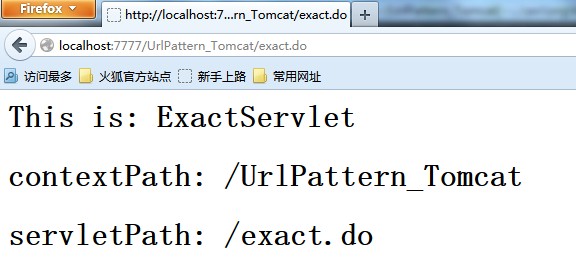
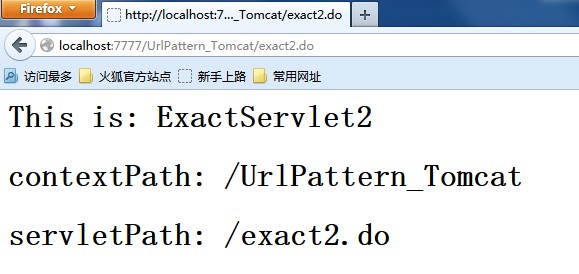
两个准确地点的Servlet都没问题。 找到并匹配了。
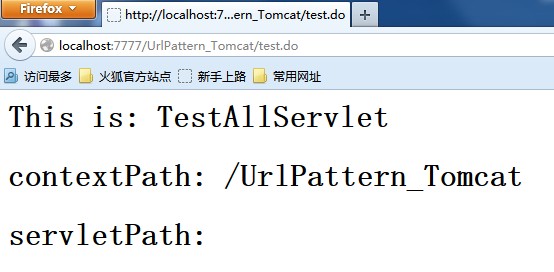
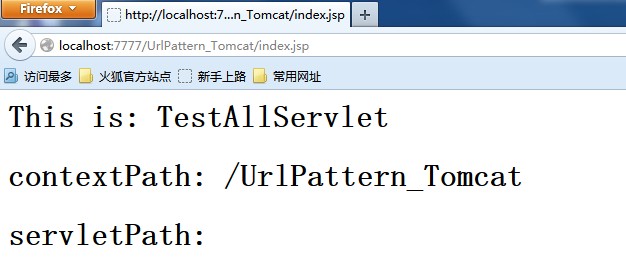
#p#副标题#e#
test.do这个地点并不存在,因为没有相应的准确的urlPattern。 所以tomcat选择urlPattern为 "/*" 的Servlet举办处理惩罚。
index.jsp(这个文件tomcat是存在的), 也被urlPattern为 "/*" 的Servlet举办处理惩罚。
我们发明,准确地点的urlPattern的优先级高于/*, "/" 法则的Servlet没被处理惩罚。
为什么呢? 开始阐明源码。
源码阐明
本次源码利用的tomcat版本是7.0.52.
tomcat在启动的时候会扫描web.xml文件。 WebXml这个类是扫描web.xml文件的,然后获得servlet的映射数据servletMappings。

然后会挪用Context(实现类为StandardContext)的addServletMapping要领。 这个要了解挪用本文开头提到的Mapper的addWrapper要领,这个要领在源码Mapper的360行。
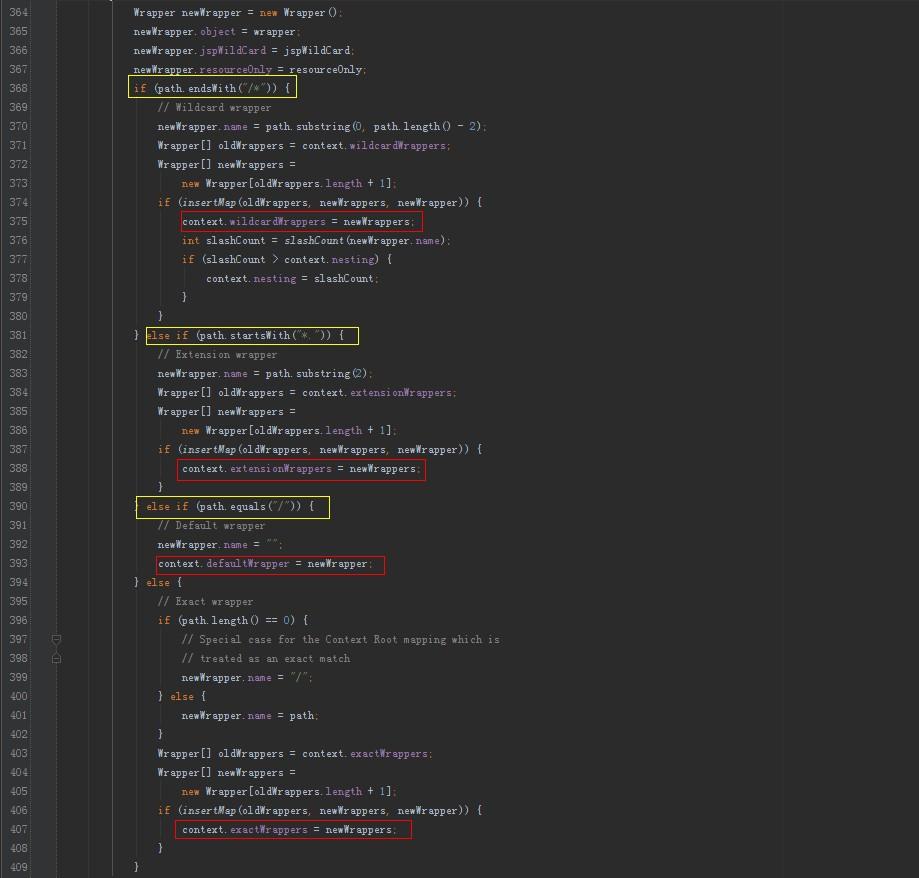
这里,我们可以看到路径分成4类。
1. 以 /* 末了的。 path.endsWith("/*")
2. 以 *. 开头的。 path.startsWith("*.")
3. 是否是 /。 path.equals("/")
4. 以上3种之外的。
各类对应的处理惩罚完成之后,会存入context的各类wrapper中。这里的context是ContextVersion,这是一个界说在Mapper内部的静态类。
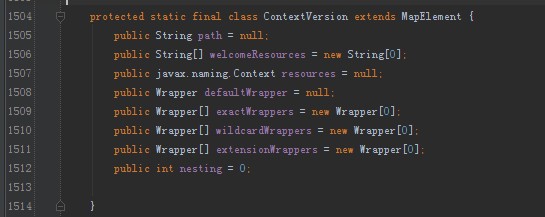
它有4种wrapper。 defaultWrapper,exactWrapper, wildcardWrappers,extensionWrappers。
这里的Wrapper观念:
Wrapper 代表一个 Servlet,它认真打点一个 Servlet,包罗的 Servlet 的装载、初始化、执行以及资源接纳。
回过甚来看mapper的addWrapper要领:
1. 我们看到 /* 对应的Servlet会被丢到wildcardWrappers中
2. *. 会被丢到extensionWrappers中
3. / 会被丢到defaultWrapper中
4. 其他的映射都被丢到exactWrappers中
最终debug看到的这些wrapper也验证了我们的结论。
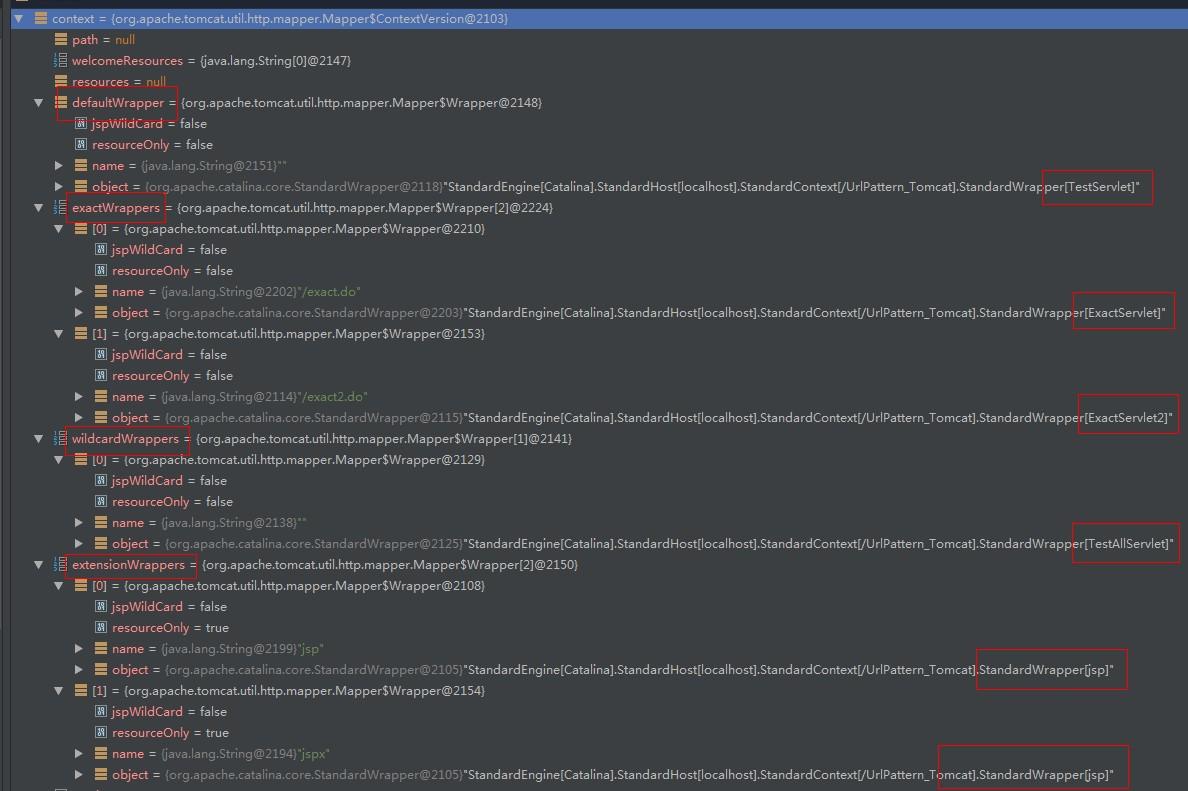
这里多了2个扩展wrapper,tomcat默认给我们插手的,别离处理惩罚.jsp和.jspx。
好了。 在这之前都是tomcat启动的时候做的一些事情。
下面开始看用户请求的时候tomcat是如何事情的:
#p#分页标题#e#
用户请求过来的时候会挪用mapper的internalMapWrapper要领, Mapper源码830行。
// Rule 1 -- Exact Match
Wrapper[] exactWrappers = contextVersion.exactWrappers;
internalMapExactWrapper(exactWrappers, path, mappingData);
// Rule 2 -- Prefix Match
boolean checkJspWelcomeFiles = false;
Wrapper[] wildcardWrappers = contextVersion.wildcardWrappers;
if (mappingData.wrapper == null) {
internalMapWildcardWrapper(wildcardWrappers, contextVersion.nesting,
path, mappingData);
.....
}
....// Rule 3 -- Extension Match
Wrapper[] extensionWrappers = contextVersion.extensionWrappers;
if (mappingData.wrapper == null && !checkJspWelcomeFiles) {
internalMapExtensionWrapper(extensionWrappers, path, mappingData,
true);
}
// Rule 4 -- Welcome resources processing for servlets
if (mappingData.wrapper == null) {
boolean checkWelcomeFiles = checkJspWelcomeFiles;
if (!checkWelcomeFiles) {
char[] buf = path.getBuffer();
checkWelcomeFiles = (buf[pathEnd - 1] == '/');
}
if (checkWelcomeFiles) {
for (int i = 0; (i < contextVersion.welcomeResources.length)
&& (mappingData.wrapper == null); i++) {
...// Rule 4a -- Welcome resources processing for exact macth
internalMapExactWrapper(exactWrappers, path, mappingData);
// Rule 4b -- Welcome resources processing for prefix match
if (mappingData.wrapper == null) {
internalMapWildcardWrapper
(wildcardWrappers, contextVersion.nesting,
path, mappingData);
}
// Rule 4c -- Welcome resources processing
// for physical folder
if (mappingData.wrapper == null
&& contextVersion.resources != null) {
Object file = null;
String pathStr = path.toString();
try {
file = contextVersion.resources.lookup(pathStr);
} catch(NamingException nex) {
// Swallow not found, since this is normal
}
if (file != null && !(file instanceof DirContext) ) {
internalMapExtensionWrapper(extensionWrappers, path,
mappingData, true);
if (mappingData.wrapper == null
&& contextVersion.defaultWrapper != null) {
mappingData.wrapper =
contextVersion.defaultWrapper.object;
mappingData.requestPath.setChars
(path.getBuffer(), path.getStart(),
path.getLength());
mappingData.wrapperPath.setChars
(path.getBuffer(), path.getStart(),
path.getLength());
mappingData.requestPath.setString(pathStr);
mappingData.wrapperPath.setString(pathStr);
}
}
}
}
path.setOffset(servletPath);
path.setEnd(pathEnd);
}
}
/* welcome file processing - take 2
* Now that we have looked for welcome files with a physical
* backing, now look for an extension mapping listed
* but may not have a physical backing to it. This is for
* the case of index.jsf, index.do, etc.
* A watered down version of rule 4
*/
if (mappingData.wrapper == null) {
boolean checkWelcomeFiles = checkJspWelcomeFiles;
if (!checkWelcomeFiles) {
char[] buf = path.getBuffer();
checkWelcomeFiles = (buf[pathEnd - 1] == '/');
}
if (checkWelcomeFiles) {
for (int i = 0; (i < contextVersion.welcomeResources.length)
&& (mappingData.wrapper == null); i++) {
path.setOffset(pathOffset);
path.setEnd(pathEnd);
path.append(contextVersion.welcomeResources[i], 0,
contextVersion.welcomeResources[i].length());
path.setOffset(servletPath);
internalMapExtensionWrapper(extensionWrappers, path,
mappingData, false);
}
path.setOffset(servletPath);
path.setEnd(pathEnd);
}
}
// Rule 7 -- Default servlet
if (mappingData.wrapper == null && !checkJspWelcomeFiles) {
if (contextVersion.defaultWrapper != null) {
mappingData.wrapper = contextVersion.defaultWrapper.object;
mappingData.requestPath.setChars
(path.getBuffer(), path.getStart(), path.getLength());
mappingData.wrapperPath.setChars
(path.getBuffer(), path.getStart(), path.getLength());
}
...
}
这段代码作者已经为我们写好了注释.
Rule1,Rule2,Rule3….
看代码我们大抵得出了:
用户请求这里举办url匹配的时候是有优先级的。 我们从上到下以优先级的坎坷举办说明:
法则1:准确匹配,利用contextVersion的exactWrappers
法则2:前缀匹配,利用contextVersion的wildcardWrappers
法则3:扩展名匹配,利用contextVersion的extensionWrappers
法则4:利用资源文件来处理惩罚servlet,利用contextVersion的welcomeResources属性,这个属性是个字符串数组
法则7:利用默认的servlet,利用contextVersion的defaultWrapper
最终匹配到的wrapper(其实也就是servlet)会被丢到MappingData中举办后续处理惩罚。
下面验证我们的结论:
#p#分页标题#e#
我们在设置文件中去掉 /* 的TestAllServlet这个Servlet。 然后会见index.jsp。 这个时候法则1准确匹配没有找到,法则2前缀匹配由于去掉了TestAllServlet,因此为null,法则3扩展名匹配(tomcat自动为我们插手的处理惩罚.jsp和.jspx路径的)匹配乐成。最后会输出index.jsp的内容。

验证乐成。
我们再来验证http://localhost:7777/UrlPattern_Tomcat/地点。(TestAllServlet依旧不存在)

法则1,2前面已经说过,法则3是.jsp和.jspx。 法则4利用welcomeResources,这是个字符串数组,通过debug可以看到

会默认取这3个值。最终会通过法则4.c匹配乐成,这部门各人可以本身查察源码阐明。
最后我们再来验证一个例子:
将TestAllServlet的urlpattern改为/test/*。
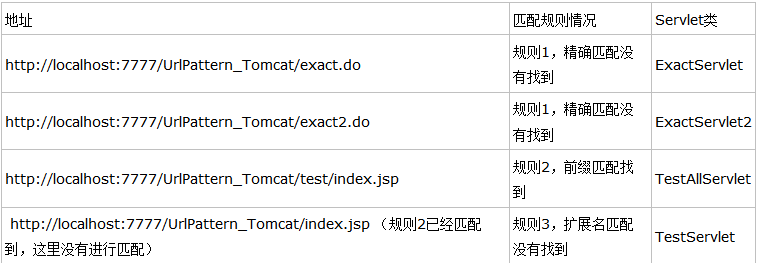
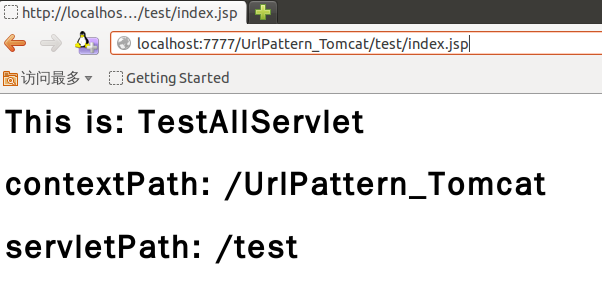
验证乐成。
实战例子
SpringMVC相信各人根基都用过了。 还不清楚的同学可以看看它的入门blog:http://www.cnblogs.com/fangjian0423/p/springMVC-introduction.html
SpringMVC是利用DispatcherServlet做为主分发器的。 这个Servlet对应的url-pattern一般城市用“/”,虽然用"/*"也是可以的,只是大概会有些别扭。
假如利用/*,本文已经阐明过这个url-pattern除了准确地点,其他地点都由这个Servlet执行。
好比这个http://localhost:8888/SpringMVCDemo/index.jsp那么就会进入SpringMVC的DispatcherServlet中举办处理惩罚,最终没有没有匹配到 /index.jsp 这个 RequestMapping, 办理要领呢 就是设置一个:
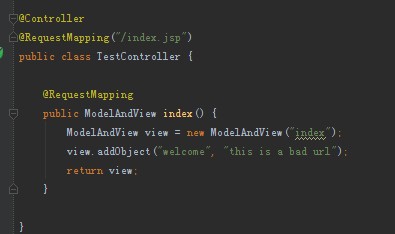
最终没有跳到/webapp下的index.jsp页面,而是进入了SpringMVC设置的相应文件("/*"的优先级比.jsp高):
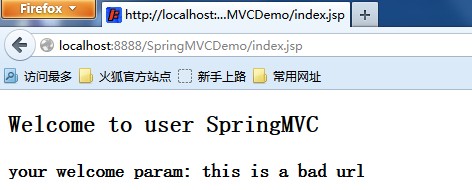
虽然,这样有点别扭,究竟SpringMVC支持RESTFUL气势气魄的URL。
我们把url-pattern设置回 "/" 会见沟通的地点, 功效返回的是相应的jsp页面("/"的优先级比.jsp低)。
总结
之前这个url-pattern的问题本身也上网搜过相关的结论,网上的根基都是结论,本身看过一次之后过段时间就健忘了。说到底照旧不知道事情道理,只知道结论。并且恰好这方面的源码阐明范例博客今朝还未有人写过,于是这次本身也是抉择看看源码一探毕竟。
#p#分页标题#e#
总结: 想要相识某一机制的事情道理,最好的要领就是查察源码。然而查察源码就需要相识大量的常识点,这需要花必然的时间。可是当你看大白了那些源码之后,事情道理也就相当熟悉了, 就不需要去背别人写好的一些结论了。 发起各人多看看源码。
作者:cnblogs Format
